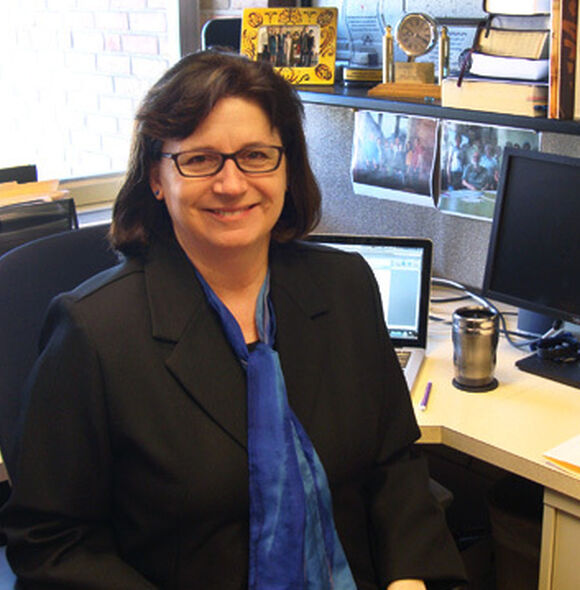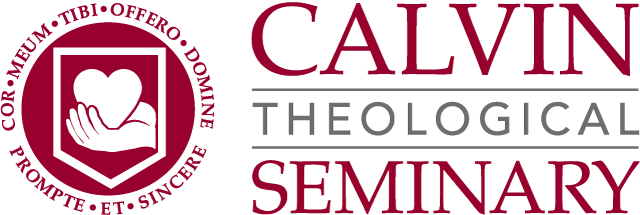Commemorating the 400th Anniversary of the Synod of Dordt in Worship

Published by Kathleen Smith
Adjunct Professor of Church Polity
This issue of the Forum commemorates the 400th anniversary of the Synod of Dordt (November 1618 – May 1619) and offers a good opportunity to reflect on the importance of that event for establishing the doctrine and practices of the Reformed Protestant churches in northern Europe—and subsequently, around the globe.
The Synod of Dordt was a meeting of church leaders who gathered to guide the developing Reformed churches in their doctrine, and to confirm practices for worship and ministry in those churches. They met in the city of Dordrecht, the oldest city in the province of Holland in the Netherlands, in response to some theological arguments that had been going on for a number of years, promoted by the theologian Arminius and his followers. This group, known as the Remonstrants, questioned the new Reformed beliefs on five main points. The pushback to those points was strong by those who became known as the Counter Remonstrants and were “sticklers” for orthodoxy. The synod meeting was organized to bring these groups together, but it actually was a trial of the Remonstrants. At the synod, the Remonstrants made their case, but were soon expelled both due to their views and the way they argued them.
The synod proceeded to establish its key points of doctrine in this controversy, responding to the five points of the Remonstrants with five points of their own which were called the “Canons of Dordt” and became one of the confessions of the Reformed churches. Unlike the comprehensive Belgic Confession and the Heidelberg Catechism, the Canons were focused on specific points of doctrine, especially regarding election. But these doctrines brought comfort to believers in those days of persecution, and still do today in churches that hold to the Canons of Dordt, including the CRCNA and churches around the world.
In August 2018 I taught pastors in two different regions of India about Reformed polity, due to their interest in becoming a Christian Reformed denomination. They also wanted to know more about the Reformed confessions, and especially the Canons of Dordt. Their leaders asked me to lecture on T.U.L.I.P., and even gave a small cash prize to the pastor who could recite all five points, in English! Perhaps their interest related to the claim that the tulip actually originated in India.
Back to the Synod of Dordt, after settling those five points, they met a bit longer to deal with a number of practical matters for church life. The international delegates had left, so this was then considered a national synod for the delegates from the Dutch provinces, similar to national synods that had occurred in Dordrecht in 1578, in Middelburg in 1581, and in the Hague in 1586. The delegates addressed many topics about ministers and church governance, but also issues related to worship and liturgy, congregational songs, Sabbath observance, marriage and ordination forms, baptism, and a new translation of the Bible.
The synod affirmed a version of the Belgic Confession as a guide to doctrine—which was a full statement of belief, not responding to particular issues like the Canons. They also approved a Church Order for the governance and organization of the churches—which was approved by governmental authorities as well. It was not the first church order for the Reformed churches, but they hoped this revision would bring unity to the Reformed churches and be adopted in all the provinces. It did become standard in many Reformed churches, and also traveled to North America with Dutch Reformed immigrants. It was the Church Order of the first Reformed church in North America, begun in New York, which was originally called New Amsterdam. That church started the Reformed Church in America (RCA), which was established in 1628, only ten years after the Synod of Dordt, as the oldest Protestant denomination in North America. The RCA used the Church Order of Dordt until 1792, then translated it into English, which, along with 73 explanatory articles, became the basis for their constitution.
The Christian Reformed Church in North America began in 1857 when a group of Dutch immigrants that had initially joined the RCA seceded from that denomination, finding it too assimilated to American culture. The CRC used the original Dordt Church Order until revising it in 1914 and translating it into English in 1920. But much of the original Dordt Church Order was retained even in a major revision in 1965. Since then, the CRC’s Church Order has been frequently revised, and adjustments are made almost every year in response to overtures from the churches as they continue to adjust to a changing North American context. But the Church Order of Dordt laid the theological basis for a lasting Reformed church structure, which continues to endure in the CRC’s Church Order today.
The Synod of Dordt had a lasting impact on Reformed worship not only through the articles of its Church Order, but also in other decisions about the practices of worship and sacraments. The Synod of Dordt approved a new Bible translation—the Staten-Bijbel, or States Bible, named that way because it was approved by the state when finished in 1637. They had been using the Liesveldt Bible, a literal translation of the German Luther Bible into Dutch. Johannes Bogerman, president of the Synod of Dordt, was a highly trained linguist and expert in the languages of the Bible, so he was part of the group assigned to produce a new translation of the original Hebrew and Greek. They didn’t get support from the civil government until 1624 and by then, two of the six appointees had died. But the translation began in 1626, was completed in 1634, and approved in 1637.
The Synod also produced liturgical forms forordination, baptism, Lord’s Supper, marriage, excommunication and readmission, bringing unity to forms that had been developed in provincial synods before 1618, and mandating their use. An important mandate was that baptism was connected to the preaching of the Word, and not allowed in a separate service.
The synod required that the votum (“Our help is in the name of the Lord…”) open the Lord’s Day service, and the Aaronic benediction (“The Lord bless you and keep you…”) conclude it. It ratified the sacramental forms and these liturgical texts were officially constituted as the Netherlands Liturgy and accorded the same authority as that of the doctrinal standards of the church, which now consisted in the Heidelberg Catechism (1563), the Belgic Confession (1561), and the Canons of the Synod of Dordt.
Thanks to the Church Order of Dordt, the Netherlands Reformed churches sang psalms and not hymns, a practice that also traveled to North America and was adopted by the RCA when it began in 1628 and was still the rule in 1857 when the Christian Reformed Church began. In the CRC, singing only psalms continued until the Church Order was revised and the first Psalter Hymnal was approved in 1934, which introduced the singing of hymns. That Psalter Hymnal was revised in 1957 and 1987, and a joint hymnal was created for the RCA and the CRC in 2014, bringing together the churches that had originally split apart.
The Heidelberg Catechism was re-endorsed by the Synod of Dordt, and parents were exhorted to teach it in the home. It was required to be taught in the schools, and ministers were required to explain a portion of the catechism every Sunday afternoon in a second Sunday service for educational purposes. This trend continued in the Reformed churches for many years, and in the CRC’s Church Order until 2010, when a revision focused on confessional preaching more generally without the required schedule of the Heidelberg’s 52 Lord’s Days per year. The second worship service required by the Church Order of Dordt is still “ordinarily” to be held in the CRC, though that practice is rapidly changing, with 75% of CRC churches holding only one service per Sunday today.
The Reformed liturgy was grounded in the Synod of Dordt but never approved for required use. On the penultimate day of the Synod—May 28, 1619—the contents of the Netherlands liturgy were listed, and that liturgy was to be revised and added to the confessional documents. However, after the synod adjourned on May 29, the committee assigned this task was so busy getting the Canons and the Acts of the Synod done, that they never finished the liturgy revision. The Canons and the revised Confession were published in 1619, and when the Acts finally appeared in 1620, the committee adjourned, without having provided the standardized Liturgy.
Contextual issues of the 16th century involved breaking away from superstitious practices of the medieval church, especially regarding funerals. In those times, families had little say in how a funeral would go, so the Dordt Church Order changed funerals from ecclesiastical functions to family matters. Following the example of Dordt, the CRC for many years considered funerals to be family affairs, while weddings were allowed to occur within a worship service. Only since 2010 has the CRC Church Order affirmed the congregation’s role in funerals as well as weddings.
As we look back 400 years, how can we remember and commemorate the Synod of Dordt in our worship today? Here are a few suggestions:
A prayer of thanksgiving could be offered for the leadership of those attending in 1618-1619 and the ongoing impact of their efforts. This prayer could lead to other petitions, such as prayers for those who live out their faith under threat of persecution today, prayers for those who work to sort out important theological issues, and prayers of confession for the divisive arguments in the Church 400 years ago, some of which continue still today.
Worship could be planned to reflect an historic Dutch Reformed service, beginning with the votum and salutation from Psalm 124:8, “Our help is in the name of the LORD, who made heaven and earth.” Genevan psalms could be sung, perhaps unaccompanied, as in that time. The service could proceed entirely a capella, with the organ or other instruments only used before and after the service. Following the Church Order of Dordt, the congregation could sing only psalms!
For the confession of faith, a selection from the Canons of Dordt would be appropriate, and the Bible reading could be taken from a Statenbijbel, and be read in Dutch, if possible. And preaching from the Canons would honor the Synod of Dordt—even though it was preaching from the Heidelberg Catechism that was required by the Church Order of Dordt.
If the service includes the sacraments, the minister could recognize that the way we practice baptism and the Lord’s Supper in the Reformed churches today was largely fixed by the Church Order of Dordt. And perhaps the minister could even use some of the words from the liturgical forms adopted at the Synod of Dordt and acknowledge that the Reformed liturgy was grounded in the Synod of Dordt.
In India last summer, I was asked how the T.U.L.I.P. teachings could be connected to worship, so I suggested the following:
T – Total depravity > confession of sin
U – Unconditional election > gratitude/assurance of pardon
L – Limited atonement > Lord’s Supper
I – Irresistible grace > baptism/dedication of our lives to God
P – Perseverance of the saints > blessing/depart to serve
Maybe you can try some of these ideas out in your worship services!
Kathy Smith
Associate Director, Calvin Institute of Christian Worship
Share
Visit Calvin Theological Seminary’s Campus
We can’t wait to host you on campus! Schedule your visit today, or, if you need more time to find a date that works for you, please request information so we can continue the conversation about supporting your calling!
